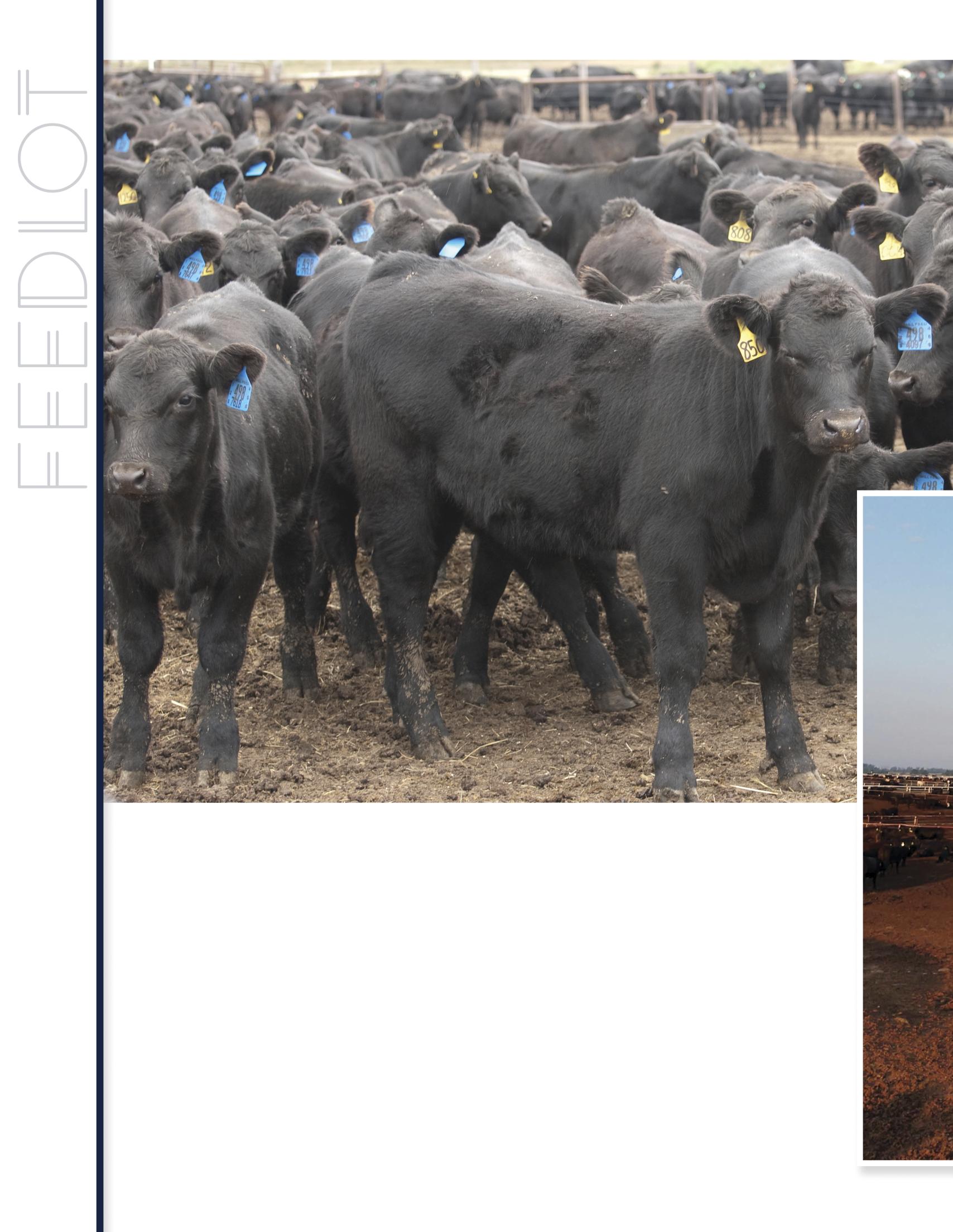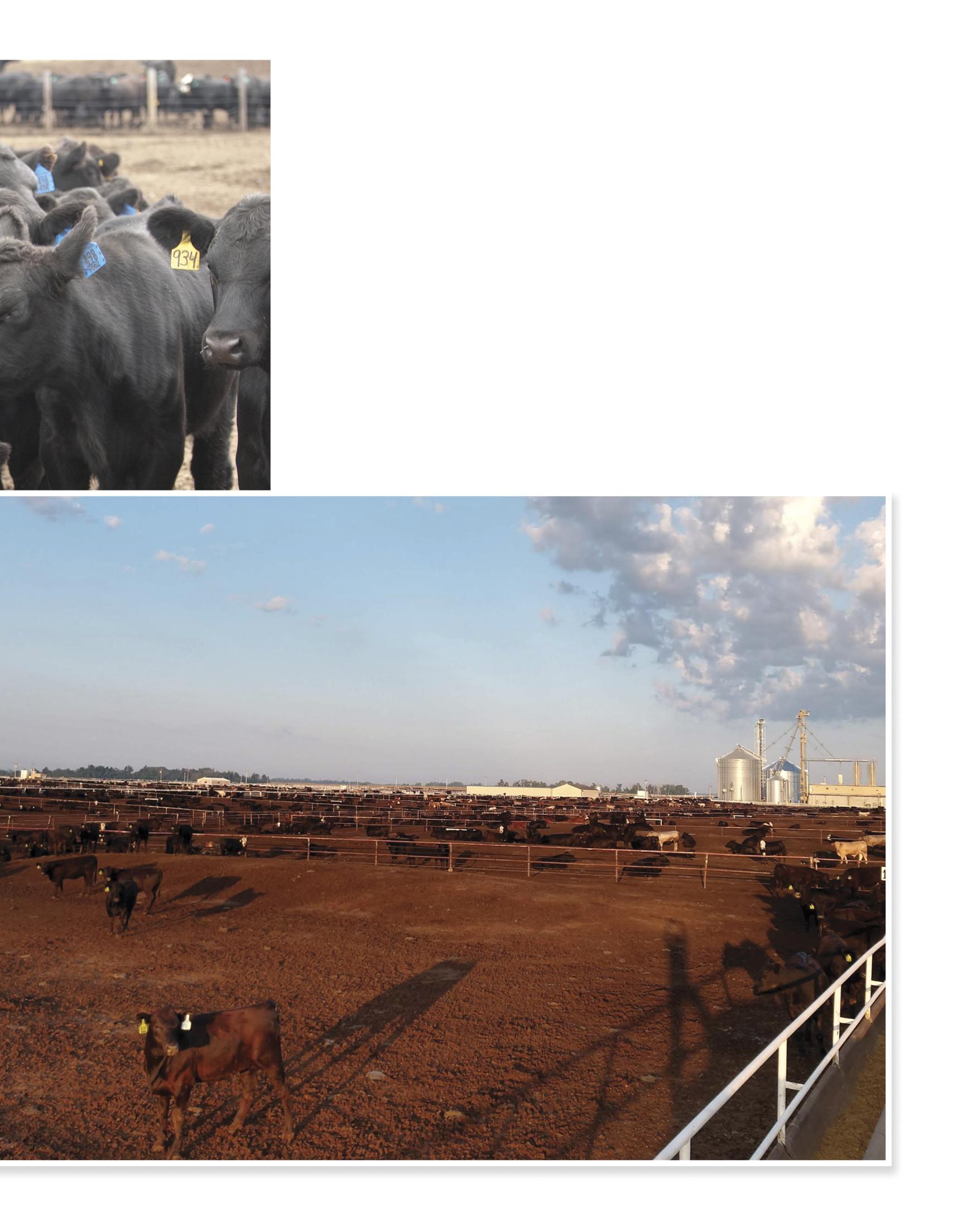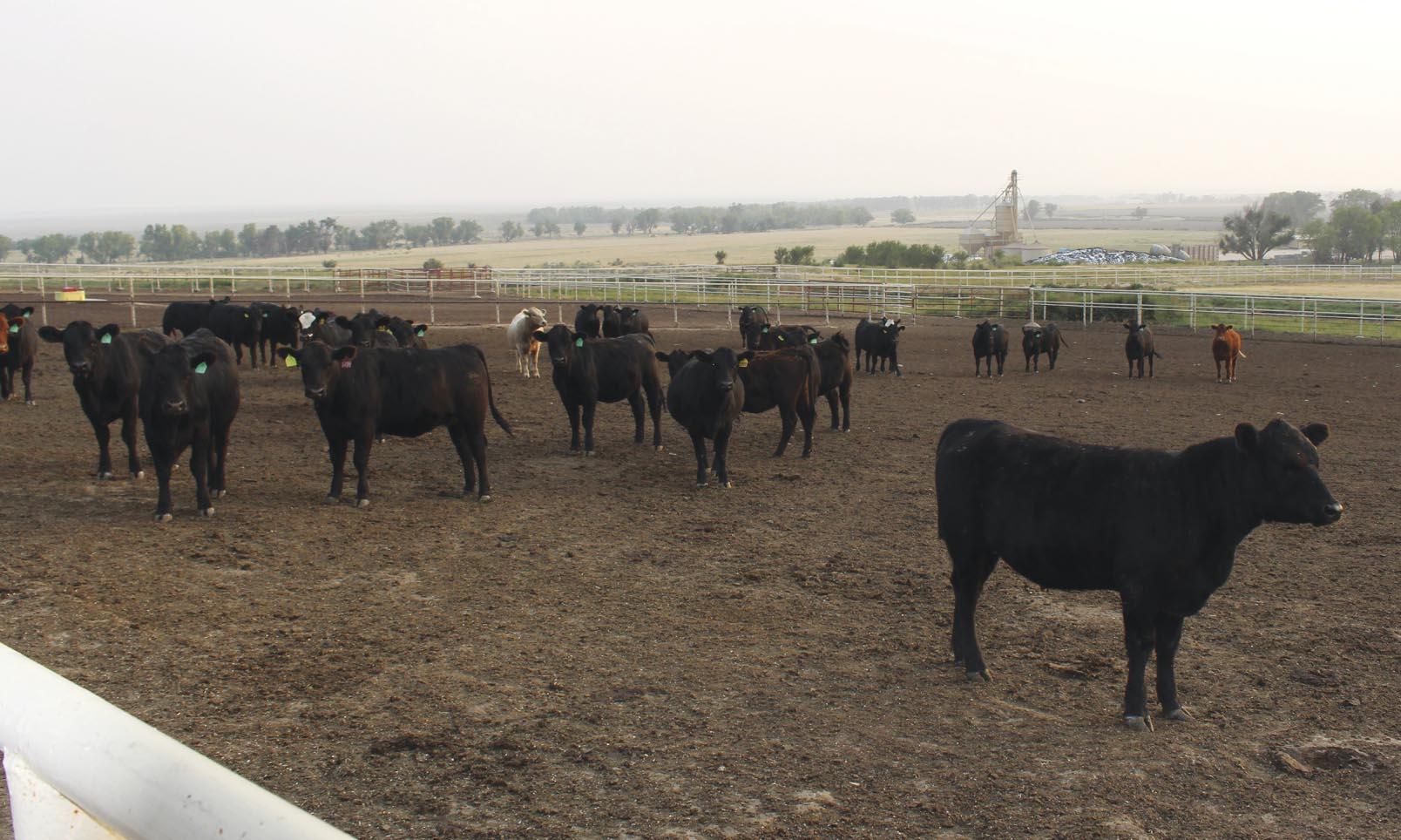
4 minute read
FIVE POINTS OF ANIMAL HEALTH EVALUATION: RESPIRATORY HEALTH
By Jose Valles, MS, Production Animal Consultation
In previous issues of Protein Producers, we talked about a five-point animal health evaluation that I like to implement when working with animal caregivers in the area of pen riding in feedyards. This evaluation not only consists of detecting cattle that may need medical attention but also helps promote animal health in the lameness, digestive, respiratory, neurological, and mental categories. In prior editions, we discussed lameness and digestive health; in this article, we will address the most common respiratory issues.

When we enter a pen of cattle, it is important to take a few seconds to look over the entire group of cattle to observe their behavior and identify any obvious cases that may need immediate attention. As we continue to move, it is critical that we get all cattle up and ask them to move a reasonable distance or time that will allow us to make a careful respiratory health evaluation. There are several things to keep in mind as we make our observations while moving cattle within their pen. Some of the characteristics to look for include nasal and ocular discharge, excessive foamy salivation, hesitation to move or moving slower than pen mates, gauntness, cough, extension of the neck, swayed back, widened shoulders, swelling around the eyes, depression, and weakness. Taking notes of clinical signs presented by the animal in its home pen is highly recommended. This information will help the doctor with case definition, diagnosis, and treatment.
Respiratory diseases are very costly and multifactorial, which means they can be caused by multiple physical and physiological stressors in combination with exposure to viral and/or bacterial pathogens. Respiratory diseases are a frequent cause of morbidity and mortality in feedlots across the United States. Cattle affected by respiratory diseases result in a significant economic loss represented by treatment costs, reduced performance, and death loss.
Some of the most common respiratory issues in a feedlot include bovine respiratory disease, diphtheria, and acute interstitial pneumonia.

Bovine respiratory disease (BRD) is described as a disease complex and is commonly found in feedlot settings year-round. BRD can be caused by both viral and bacterial pathogens. Some of the most common viral pathogens include bovine respiratory syncytial virus (BRSV), parainfluenza 3 virus (PI3V), bovine viral diarrhea virus (BVDV), and bovine herpesvirus-1 (BHV-1). The most common bacterial pathogens in feedlot operations include Pasteurella multocida, Mannheimia haemolytica, Histophilus somni, and Mycoplasma bovis. It is believed that viral infections predispose affected cattle to bacterial infections. Viral pathogens can suppress the immune system and can also harm respiratory mucosal surfaces, which then allows bacteria from the upper respiratory tract to relocate to the lower respiratory tract and create a bacterial infection in the compromised lung. Clinical signs can include fever, depression, lack of appetite, increased respiration, cough, ocular and nasal discharge, salivation, extension of the neck, and hesitation to move.
Another respiratory disease commonly seen in feedlot cattle is necrotic laryngitis, better known as diphtheria. Diphtheria cases are sporadic and can affect cattle any time of the year with higher incidence during the fall and winter months. Feedlot cattle 3 to 18 months of age are at higher risk to become affected. Diphtheria is a noncontagious infectious disease that can affect cattle in an acute or chronic form. The gram-negative, nonsporeforming anaerobe Fusobacterium necrophorum causes inflammation and necrotic lesions to develop in the laryngeal mucosa and cartilage, which then causes the rima glottidis to narrow and produce an obstructed breathing sound. Diphtheria clinical signs include fever, dyspnea, cough, and stridor. Clinical signs can worsen rapidly as the ambient temperature increases or if the affected animal is put under intense physical movement.
Acute interstitial pneumonia (AIP), also known as atypical interstitial pneumonia, is a respiratory disease that sporadically affects feedlot cattle. AIP most commonly affects cattle during late spring, summer, and fall, particularly during hot, dry weather. AIP is a very costly disease as it is more likely to affect cattle that are closer to market weight. Clinical signs presented by cattle affected by AIP can include swayed back, extension of the neck to facilitate breathing, excessive foamy salivation, panting, open mouth breathing, grunting, refusal to move, and, in some cases, aggressiveness. Symptoms can progress very rapidly as the ambient temperature increases or when the animal is put under intense physical movement.
When evaluating cattle for respiratory disease, it is important to know the recent history of the pen or lot under evaluation as processing or similar events can make cattle look tired or depressed and sometimes be febrile. It is very important to properly move all cattle within the pen as cattle with early stages of respiratory disease may be difficult to identify. Note-taking is essential when pulling a sick animal from a pen, as this will help guide the doctoring crew to a better case definition to provide proper treatment and follow up.
Resources
Bovine Respiratory Disease (BRD). Accessed at https://www.zoetisus.com/conditions/dairy/bovinerespiratory-disease-_brd_.aspx.
Campbell, J. Necrotic laryngitis in cattle. Merck Veterinary Manual. June 2016. https://www.merckvetmanual.com/respiratorysystem/respiratory-diseases-of-cattle/necrotic-laryngitisin-cattle
Chai J, Capik SF, Kegley B, Richeson JT, Powell JG, Zhao J. Bovine respiratory microbiota of feedlot cattle and its association with disease. Vet Res. 2022 Dec; 53, 4.
Jensen R, Lauerman LH, England JJ, Braddy PM, Horton DP, Flack DE, Cox MF, Einertson N, Miller GK, Rehfeld CE. Laryngeal diphtheria and papillomatosis in feedlot cattle. Vet Pathol. 1981 Mar; 18(2): 143-50.
Loneragan GH, Gould DH. Acute interstitial pneumonia in feedlot cattle. In American Association of Bovine Practitioners Proceedings of the Annual Conference. 2000.
Taylor JD, Fulton RW, Lehenbauer TW, Step DL, Confer AW. The epidemiology of bovine respiratory disease: What is the evidence for predisposing factors? Can Vet J. 2010 Oct; 51(10): 1095-102.
Valles JA, Apley MD, Reinhardt CD, Bartle SJ, Thomson DU. Pathologies of acute interstitial pneumonia in feedlot cattle. Am J Anim Vet Sci. 2016; 11(1): 1-7.
Jose Valles graduated with his Master of Biomedical Sciences from Kansas State University in 2013. He was born in the state of Durango in Mexico. He spent his childhood in both Durango and in southwest Kansas. In Mexico, his family has been dedicated to a cow-calf operation and the farming of dry beans, corn, and oats. After high school, Jose decided to further his education at the university level and has since lived in the U.S. He attended Seward County Community College in Liberal, Kansas, and during that time worked at the Liberal Animal Hospital. Jose transferred to Kansas State University through the Developing Scholars Program and Bridges to the Future Program. While attending Kansas State University, Jose worked at the Beef Cattle Institute from 2007 to 2013. After graduating from Kansas State University in 2013, Jose joined the PAC team, then later that year married his girlfriend Areli, and moved to Kearney, Nebraska. Jose enjoys spending time with his beautiful wife Areli and his sons Matteo and Antonio. He also enjoys riding a good horse, horse races, and grilling steaks.
This article has been translated to Spanish on page 54.











